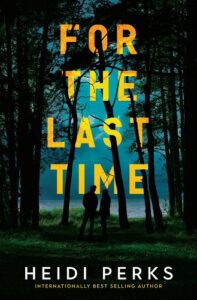Who doesn’t love a superbly executed plot twist? One that completely takes you by surprise and turns the story on its head. One that makes you gasp out loud because you truly did not see it coming. There have been times when I have been totally blindsided by a twist and every time that happens I absolutely love it. I am particularly thinking of Greer Hendricks’ The Wife Between Us here, which will always stay with me for the fact that it was so superbly done and I don’t believe I have ever seen it executed quite like this novel does anywhere else. (I won’t add any spoilers here.) But the latter point in itself is important. Because as soon as a twist is replicated, it becomes easier for a reader to guess. The secret is to come up with a cracking new way of incorporating a twist into your novel. Easier said than done, right?
Plot twists are expected in the crime and thriller genre. No one wants to read a book, or watch a TV series that unfurls in exactly the way the reader believes it will. Many books are now marketed on the strengths of their twists with straplines and quotes on the covers the marvel at, “a twist you won’t see coming.”
And yet this in itself causes a problem for me both as a reader and a writer. As a reader I often find myself second guessing that twist I now know is coming, even when I don’t want to do so. And as a writer it means the pressure of feeling like I have to constantly up my game because readers are not easy to trick! But maybe that’s no bad thing.
At the start of my writing process I will always ensure I know what my key plot twist is going to be. Without fail it comes a close second to generating the idea for the story, which is often the premise of the book. My idea for my latest novel, For the Last Time, centred around the idea of a couple and their marriage counsellor, and how much power that counsellor could have. As soon as I had figured out what the story was to be I set about figuring out the twist. How was I going to radically change its direction? What did I want my readers to believe that wasn’t actually the case? And once I had worked this out, how could I put them off the scent? It is so important that I know this at an early stage and certainly before I start writing any words, because without it I don’t have a book.
There are a number of ways to write in a twist. It could be character driven such as the good guy is actually the bad guy, or vice versa. There could be an unreliable narrator, whose traits may reveal themselves over time rather than in one punch. I personally like this way of drip feeding clues, and allowing the reader to start suspecting the main character themselves rather than have the book tell them.
But what does a plot twist need to do to perform successfully? First and foremost it should be a genuine surprise to the reader that engages them further. It needs to be set up in a way that the reader does not see it coming, and yet when it happens it makes them wonder how they didn’t, and how they’ve been tricked so easily. But it mustn’t come out of nowhere. The clues must be there, hidden in the story. If you were to go back through the book, you need to be able to find them and then kick yourself for ever missing them!
While I am working on what my plot twists will be, I am also thinking about where they will appear. The main twist does not need to come at the end of the story, in fact in a few of my books my key ones come at the mid-way point. Revealing a major plot twist half way through can be a brilliant way of making the reader realise that everything they have assumed and taken for granted up to this point is in fact wrong, and personally I love this.
When this is done it is equally important to understand what happens after the reveal. Effectively this is the start of a new line of story, which means it needs to keep capturing the readers’ attention, especially if you have answered the main question that has been driving their interest so far. Think Gone Girl. Half way through and it all becomes clear what has happened between Amy and Nick – which one of them is telling the truth and which one is lying, and so the second part of the novel brings a new direction and different questions. And very likely, there is the need for another twist at the end of the book.
Once I know what the main twist is going to be I can start figuring out how I will misdirect the reader. This is always built up in layers. I would find it impossible to nail it in one go, in the first draft. In fact many of the mis-directions or little clues I am most proud of will be peppered in further down the line, in third or fourth drafts, when I know my characters and their stories better.
It is essential to bury them well and finding the right place to drop them in is crucial. I don’t want the reader finding them before I am ready wherever possible, and although I am prepared that some will always figure out where the story is heading, I hope the majority don’t and a good way to do this can be by following a twist with an even bigger twist. And early readers are always a great test to see whether or not they are working.
***


















